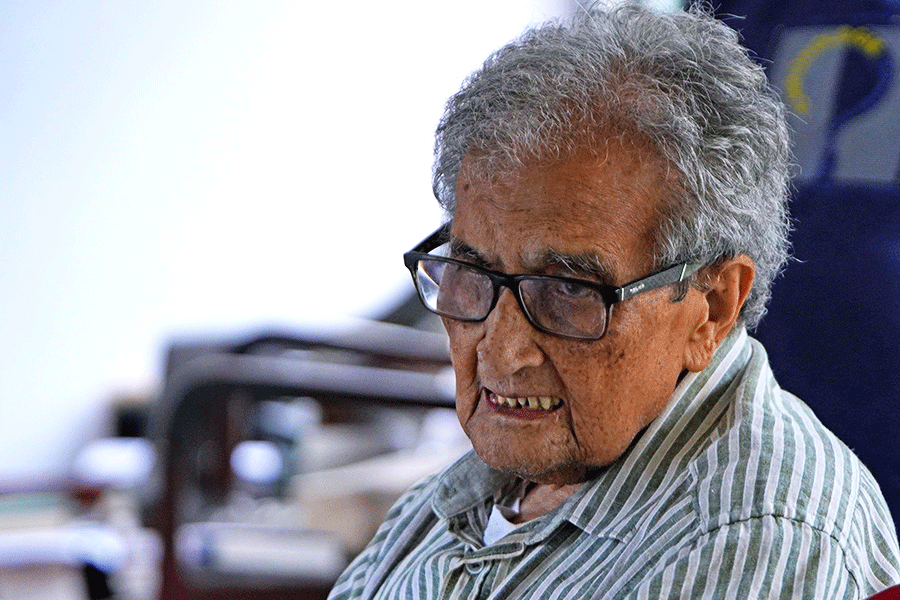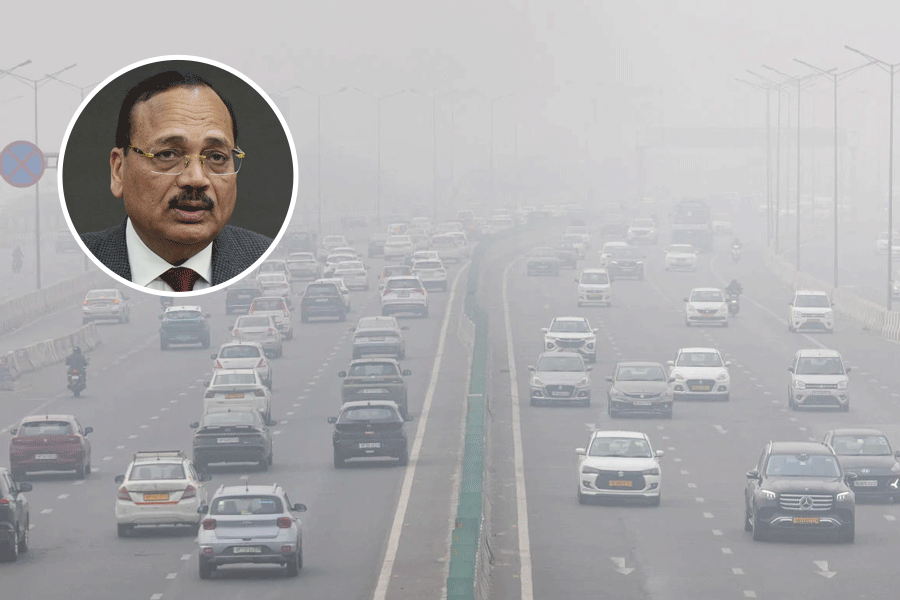 |
| A securityman outside the Kalpakkam plant on Wednesday. (AFP) |
Kalpakkam, Aug. 6: The Indian nuclear establishment today admitted that overexposure to radiation to six persons at the Kalpakkam reprocessing plant in January was due to “human error”, but added that it did not warrant any prolonged shutdown of the country’s nuclear facilities.
The incident that occurred on January 21, 2003, had sparked international criticism of India’s nuclear power programme.
The plant, a prestigious facility under the aegis of the Bhabha Atomic Research Centre (Barc), was set up to reprocess spent fuel from the two atomic power reactors here to recover plutonium and depleted uranium for future use as fuel in the second generation fast breed reactors.
Addressing a group of reporters visiting the plant, Barc director B. Bhattacharjee said it was “not a nuclear accident” but “only an incident” that stemmed from “over-enthusiasm and error of judgement” on the part of the six workers of the plant.
However, Bhattacharjee along with other top officials, including S.B. Bhoje, the director of the Indira Gandhi Centre for Atomic Research, admitted that in terms of magnitude, the radiation exposure to the six workers was “beyond the yearly permissible limit”.
“Given our safety track record of the last 40 years, we have never landed ourselves in this kind of a situation and it is the worst case of radiation exposure so far,” Bhattacharjee said. He was quick to add that it was “worse” only in a relative sense.
Dismissing queries on whether there was “international pressure to close down such facilities”, the Barc director said there was no justification in the view. “We are an advanced country in the nuclear field and our record of reprocessing (spent fuel) is one of the best among operating plants worldwide.”
In an international scale of 1-10, the Chernobyl disaster has been rated seven and the Three Mile Island reactor accident in the US rated five, he said. What happened in Kalpakkam would be put “between one and two and, hence, it cannot be called a nuclear accident”, Bhattacharjee said.
Detailing the sequence of events that led to the “inadvertent overexposure to radiation”, Bhattacharjee said the incident took place in the adjacent waste tank farm and not in the main reprocessing plant.
Of the 14 tanks in the auxiliary facility, plant officials had planned to empty out the contents of Tank-3, which the group of workers had first mistakenly thought contained only low-level liquid waste, he said. This waste comes from the main reprocessing plant through underground pipes. The idea was to transfer high-level liquid waste to Tank-3.
Bhattacharjee said the six workers went into the tank area without the usual safety gadgets to “test the system”. On the second day, when they had collected samples from the tank, it gave an “alarming signal”, showing a higher level of radioactivity. A part of the high-level liquid waste had seeped into the tank due to a “valve leakage”, the Barc director said.
The medical authorities have, however, “confirmed that all the six personnel are in good health and for now, there are no abnormal findings”, Bhattacharjee claimed.
There was neither any release of radioactive material to the environment nor any risk of exposure to any member of the public, he clarified.
“Even this morning, I met all the six here and they are cheerful,” said Bhattacharjee. But he declined to produce them before the large media contingent, saying they did not wish to be “paraded” as showpieces. Like all radiation workers in nuclear power establishments, they will be under regular medical surveillance, he said.
The reporters were ushered into the plant’s green room, asked to wear new shoes and gloves besides being made to slip on a white overcoat with a radiation-check device before being taken round the plant and the waste tank farm.
Bhattacharjee ruled out any disciplinary action against the six personnel. “They did it unknowingly and we need to infuse confidence in them,” he said.
Replying to a question, the Barc director denied that the area gamma monitoring meter, another device to measure radiation, was fixed at the premises only after the January 21 incident.
Four levels of safety clearances have been put in place by the Barc safety council, Bhattacharjee said, adding that all its recommendations to replace valves and components with technologically-upgraded ones will be implemented before restarting the processing plant.
However, the director of Barc’s health and safety group, V. Venkatraj, declined to give a time frame for revival of operations. A regulatory inspection team comprising experts from Barc will be visiting Kalpakkam in another 10 days to review the steps taken and will give their recommendations, he said. “Only then, in another two to three weeks, we will be able to take a decision on reopening the processing plant,” Venkatraj said.










